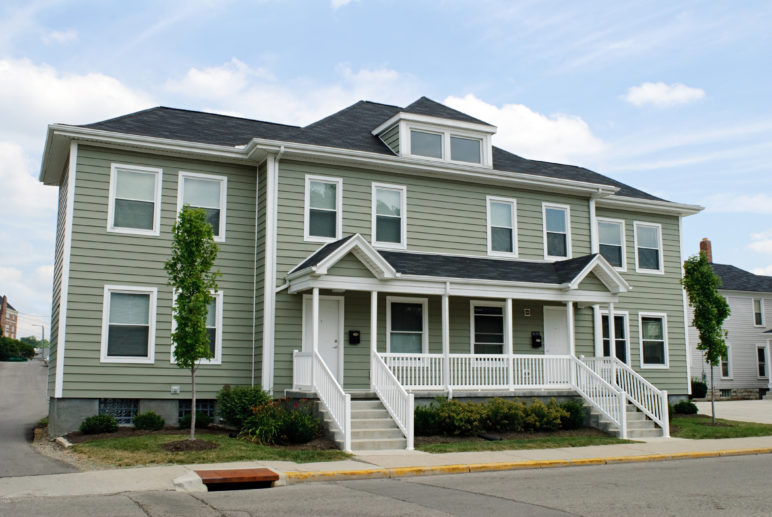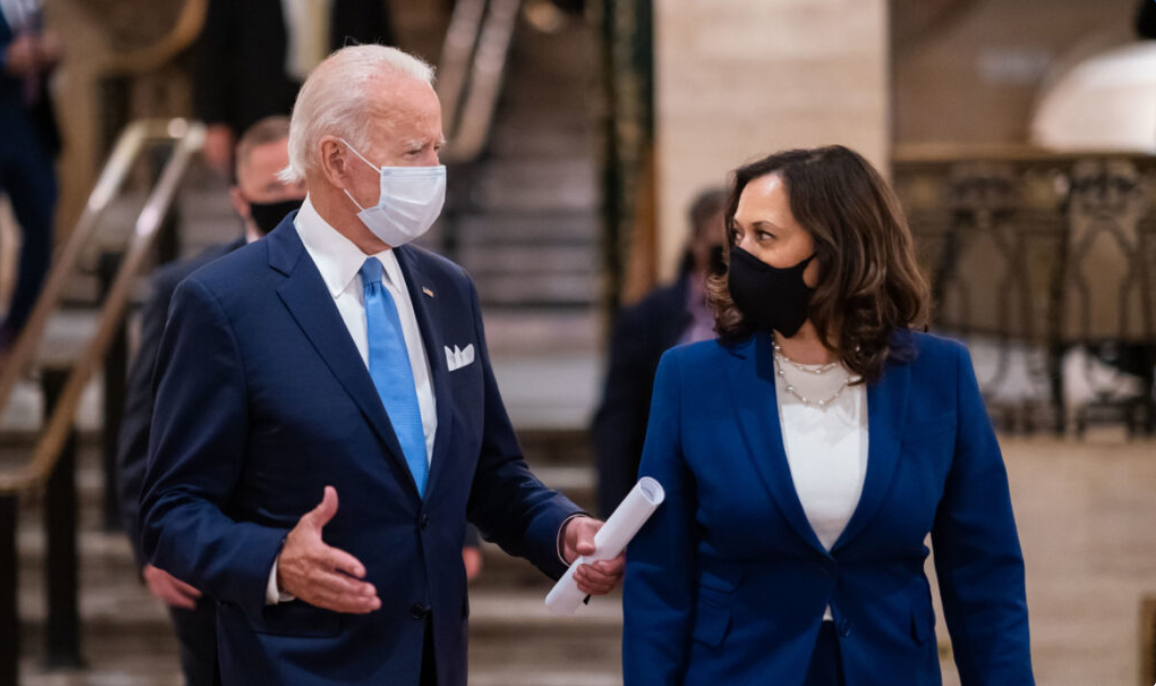Short of a few more final battleground state vote counts to drop and a victory speech, it looks like we can start calling Joe Biden the president-elect. The good news is Biden has a great plan for federal action on housing. Enacting Biden-Harris housing policy priorities would improve security for millions of Americans and help reverse the crippling shortage of homes afflicting communities throughout the US.
The bad news is a Republican-controlled Senate will block most, if not all of it.
The Senate—an institution inherently designed to allow minority rule—has a long history of obstruction. Republican Senate leader Mitch McConnell blockaded almost all of President Barack Obama’s agenda when given the chance. The Senate under his leadership rendered hundreds of House proposals “DOA,” including numerous housing measures. Not to mention stalling pandemic stimulus that would keep Americans securely in their homes as the economic and health crisis deepens.
With the Senate in Republican hands, unless McConnell unexpectedly stops being McConnell and allows bipartisan compromise, Biden’s most ambitious housing proposals look destined for demise.
The good news is Biden has a great plan for federal action on housing. Enacting Biden-Harris housing policy priorities would improve security for millions of Americans and help reverse the crippling shortage of homes.

Georgia’s two Senate runoff elections in January offer an opportunity for Democrats to take back the Senate, but chances are slim. In all likelihood, Senate-driven gridlock will stymie federal progress—not only on housing policy, but also on other paramount issues such as climate change—at least until Democrats get their next shot at the Senate in 2022. Elections matter.
As for near-term action on housing, emergency rental assistance is still a possibility. Contradicting his pre-election position, McConnell now says he’ll prioritize a COVID stimulus package that includes aid to states when Congress reconvenes next week. No guarantees rental assistance will end up in the bill, but it’s been a consistent priority for Democrats.
Also, two modest bills that would require cities to account for their needless restrictions on homebuilding—the YIMBY Act and the Build More Housing Near Transit Act—still have a shot at passing (see my take on those proposals).
Let’s recap Biden’s plan to fix the shortage of homes people can afford
For at least a decade now, Americans have been grappling with a worsening housing crisis. In some places, stagnant incomes are to blame. In other places awash in high-paying jobs but hamstrung with restrictions on new housing, competition prices out even middle class families.
The solution rests on two policy pillars: (1) expand financial support for those who can’t afford housing, and (2) impel cities to loosen their rules and allow more homes.

The federal government has unmatched potential to take on these two core problems. The solution rests on two policy pillars: (1) expand financial support for those who can’t afford housing, and (2) impel cities to loosen their rules and allow more homes. Joe Biden’s housing plan incorporates both, synthesizing many proposals put forth by his more left-leaning presidential primary challengers. It’s a really good plan!
In stark contrast, Trump never had any kind of coherent housing strategy, and spent the final months of his campaign tweeting that low-income housing would “destroy suburbia”—a dog whistle aimed at undermining both policy pillars.
Here are the five essential elements of Biden’s housing plan:
1 – Section 8 vouchers for all who qualify
The $20 billion program currently provides vouchers for two million low-income households to help them pay rent, but funding only covers about a fourth of those that qualify. Biden calls for fully funding Section 8 “so that everyone eligible gets the assistance they need to pay their rent for a safe home.”
(Trump proposed cutting Section 8 funding by 20 percent, raising the tenant’s rent payment portion from 30 to 35 percent, and adding work requirements for recipients.)
2 – A new renter tax credit
Biden’s plan includes renter tax credit similar to the one proposed in Vice President-elect Kamala Harris’ 2018 Rent Relief Act. With a price tag of $5 billion, it’s “designed to reduce rent and utilities to 30 percent of income for low-income individuals and families who may make too much money to qualify for a Section 8 voucher but still struggle to pay their rent.”
3 – More funding for subsidized housing
The Biden plan would:
- Establish a $100 billion Affordable Housing Fund to construct and upgrade affordable housing, including $65 billion for local housing authorities and tribal governments, and $20 billion for the Housing Trust Fund;
- Boost Community Development Block Grant (CDBG) funding by $10 billion over ten years to support affordable housing in low-income communities;
- Invest $10 billion in the low-income housing tax credit (LIHTC) program;
- Support passage of the $13 billion Ending Homelessness Act and reform federal programs to adopt a “housing first” approach.
(Trump’s 2021 budget request proposed to slash HUD’s budget by 15 percent, cut public housing operation funds by 21 percent, and eliminate both the Housing Trust Fund and CDBGs.)
4 – Strengthened anti-discrimination policies
Biden’s plan commits to:
- Reinstating the Affirmatively Furthering Fair Housing rule requiring communities receiving certain federal funding to identify and correct discriminatory policies (Trump suspended the rule in 2018);
- Working to pass the Legal Assistance to Prevent Evictions Act;
- Strengthening multiple policies to address racial bias in lending and appraisal;
- Establishing a new “Homeowner and Renter Bill of Rights.”
5 – Federal leverage for local zoning reform
Modeling on Senator Cory Booker’s HOME Act of 2019, the Biden plan would make CDBGs and Transportation Block Grants contingent on cities’ adopting strategies to get rid of “exclusionary zoning” laws that stymie construction of new homes. It would also add such reforms as a condition for other funding programs where possible, and offer local planning grants to support the necessary policy changes.
The plan explicitly calls out how overly restrictive zoning laws “keep people of color and low-income families out of certain communities,… limit affordable housing options, and contribute to urban sprawl” and climate pollution.
(In 2019, Trump signed an executive order establishing a council to eliminate federal, state and local “barriers that are holding back affordable housing development.” But his subsequent tweets and speeches blatantly contradict that intent.)
The long-term view for federal action on housing
The spending required for the first three plan actions described above all but rules out passage by a Republican-controlled Senate. And Republican ideology would likely preclude votes for the fourth.
As demonstrated by bipartisan support for the YIMBY Act, some Republicans are working to pass action on housing similar to the fifth element of Biden’s plan noted above. However, members on both sides of the aisle are likely to lose their stomach for bills that push too far on federal control over local governments. All told, the most impactful elements of Biden’s housing plan are pretty much dead in the water without Democrats in control of the Senate (and House).
If and when Democrats do take back the Senate, another big hurdle remains. The filibuster ensures that most, if not all, of Biden’s major housing proposals would need 60 votes—highly improbable under the likely scenario of a slim Democrat majority. To escape that dysfunction, a Democratic majority could end minority rule and eliminate the filibuster once and for all.

With the filibuster still in place, there is a workaround that could enable passage of parts of Biden’s plan: budget reconciliation. Increased funding for existing programs can be passed as part of a budget reconciliation bill that’s immune to filibuster and therefore only requires a simple majority vote. One of Biden’s key proposals—the plan to quadruple Section 8 funding—is fair game through reconciliation, and likewise boosting the Housing Trust Fund.
To finish my thought experiment, let’s assume that after the 2022 election Democrats control the Senate and abolish the filibuster. That would open the door to taking Biden’s good ideas for federal action on housing reform even further, on both policy pillars—(1) funds for subsidy and (2) leverage for local zoning reform.
1- Automatic cash housing aid
On the first pillar, Biden’s intention to expand Section 8 vouchers is a good start but falls short because it doesn’t make Section 8 a true, permanent entitlement. That means Congress must appropriate new funding every budget cycle, repeatedly putting the program at political risk.
More importantly, it also means that everyone who needs aid isn’t necessarily covered—the massive unemployment caused by the pandemic is a good example of how that could happen. As my colleague Michael Andersen has written, a critical fix for Section 8 is to make benefits an entitlement, like food stamps, automatically available to anyone whose income drops below a set level.
Another problem with Section 8 is most landlords don’t accept the vouchers. That makes approved rentals hard to find, plus newly qualifying tenants have to move if their current landlord refuses Section 8. The obvious (but also politically fraught) fix is a federal mandate for universal acceptance of vouchers. Alternatively, a better long-term solution is a complete revamp to a program that gives struggling renters the flexibility and freedom of straight up cash instead of vouchers.
2 – Upping the leverage for housing abundance
For the second pillar, Biden’s embrace of the HOME Act is a solid first step. But it’s only a small one, because the HOME Act has no prescriptive teeth: cities don’t have to loosen restrictions on housing to remain eligible for federal funds, they only have to demonstrate their intentions to do so someday.
To have a meaningful impact, federal laws must have the kind of teeth that spurs widespread local law changes to allow more homes. In a previous article I described the key elements, including funding types, carrots and sticks, and regulatory versus outcome-based compliance.
Representative Alexandria Ocasio-Cortez’s A Place to Prosper Act shows one way a prescriptive policy could work. It would deny federal road funding for projects located in a city that mandates off-street parking, requires lot sizes larger than one half acre, or bans multi-unit homes or manufactured homes.
In September, the Urban Institute published a report on “how the federal government can help eliminate exclusionary zoning.” The authors make an important point to focus on conditioning funds that go to states, because most of the federal dollars received by local jurisdictions flow through states first.
A win, a setback, and the work to be done
Voters took the first necessary step for federal action on housing policy by ousting Trump. Unfortunately, as long as the Senate remains under Republican control, progress on the bold ideas in Joe Biden’s housing plan are unlikely to ever see the light of day.
Any ambitious federal action is now a longer term game.
One option would be for Republicans and Democrats to find some way to compromise across party lines. Yes, the possibility seems remote today. But that’s exactly what happened last year with Oregon’s state-wide legalization of duplexes, triplexes and fourplexes and California’s legalization of up to two cottages on any lot. Republicans, especially in rural areas, crossed party lines to support Democratic pro-housing bills because they felt someone should be allowed to add a home to their property if they want to.
The other option for action on housing is purely partisan. First, Democrats must take back the Senate under a pro-housing president like Biden. Then they must abolish the filibuster.
Congress can then pass the kind of bold legislation the country needs on two fronts: cash assistance for people who need help to pay the rent, and federal guidance to ensure that cities allow enough homes of all shapes and sizes for us all, no matter our race, income, or where we live.

